| Revista Umělec 2004/1 >> My Dear Friend | Lista de todas las ediciones | ||||||||||||
|
|||||||||||||
My Dear FriendRevista Umělec 2004/101.01.2004 Radek Wohlmuth | full happiness | en cs |
|||||||||||||
|
The name Nondas Andriopulos sounds exotic to exotic to Czech ears, though it definitely doesn’t resonate with the same kind of tension as the names Duchamp, Beuys or Sperri. It just sounds so damned Greek. Which can often raise a lot of distrust in a Central European. A fleeting memory of the frivolous Olympian gods and there’s no need to say another word. Otherwise, forgetting about antiquity, which for most people means the half-ruined Acropolis and a hazy forest of Ionic columns, all other Greek art shrinks down to a guy nicknamed El Greco, who was – if memory serves – a Cretan. But for peace of mind, let’s also not forget about Jannise Kounellis.
Nondas Andriopulos. The moment my girlfriend and I arrived in Greek Macedonia in the second half of September the temperature plunged and it rained in buckets. Faithfully convinced that Greece is basically a museum, we first checked out Thessaloniki and then the rocky monasteries of Meteora. After that we explored the surrounding villages where we were staying. Our first expedition had already born fruit. The countryside was empty of people and full of stony slopes dashed with low bushes, where only here and there goat paths crossed. In one of the low pines we discovered an artistically installed gaudy red plush St. Nicholas. It became blindingly clear that this wasn’t going to be as easy as we had thought. On the way back we walked along the sea and came upon a small bay with a sandy beach cut into the rocky banks. On one end was built a hut made from canvas and various flotsam that had washed ashore. Probably a homeless person. A few days later the sun came out and nothing was more natural than to buy a bottle of retsina and head off for the old Zeus-forsaken beach. Really, almost no one knew about this place and there weren’t more than five people who came and went, but the basic elements were the same: the turquoise sea, the horizon where the holy mountain Athos got lost in the clouds, the fishing port in the distance, a donkey on a rope which grazed all day peacefully, here and there a hen, Zeus knows where from, and most of all the local resident. Lord of the beach. You couldn’t help but notice him, maybe that was because he walked around naked, in just a cap, or holding a black umbrella over his head. He talked to nobody. All day he tinkered with something among the stones and in his free time he swept the sand with fantastic energy around his dwelling. Sometimes with great concentration he backed out into the water and took pictures of his work. He put on a swimming suit only when he went to buy something to eat. We started going there regularly and he accepted us with the taciturn condescension of a man who doesn’t send away the uninvited, as hospitality is sacred in this country. We chose a strategic place on the other side of the bay. When we went home in the evening a few days later, he raised his hand in greeting. Since then it became a ritual. Once time after he left I couldn’t stand it any longer and I went to have a look at what he had been doing over there. I crawled over the stones and my eyes popped out. In the sand he had built, using whatever the sea had washed in — roots, pieces of wood and rope — a small arena with rope ladders and a trapeze. Towards the sea was a sign with the inscription: “Mad Circus.” Nearby was a pile of other materials – potential figures, animals and platforms. The guy must have installed and photographed whole performances there. I literally tottered back to “our” end of the beach. We tried to make get to know him with him, but with little success. Our praise of his circus pleased him, and he never commented on our invasion into his space. He asked us to build him a sand castle, and when my girlfriend made a sheep farm, he was happy. I made a last desperate attempt a few days before our departure. Using a piece of coal I drew an eye on a flat stone and brought it to him, so that his circus could at least have a viewer. With a serious face and great ceremony he accepted the stone, put it on a rock wall so that it could “see well,” thanked me and tactfully informed me that I was walking on cleanly swept sand. Then he added that he had work to do and no time for chatting, maybe some other time. I went back and felt like an absolute idiot. The naked man in the cap was already sweeping the sand behind me. The last evening the weather changed again; the wind picked up and huge waves were rolling in, up to a few meters. We went for a walk and came upon a chapel from which you could see the bay. The stream that flowed into the sea had become a small river, half the beach was under water and the waves reached up to our nudist’s hut. He was sitting on a stone and waving emphatically up to us. We wondered how he would respond, so we climbed down. Only then Nondas told us that he had been waving at us to come save him. We built sea walls around his hut and a drainage ditch. The water rose, the moon climbed into the sky and the sea roared. Now it was time to talk, he said. When he found out that we were Czechs he brightened and said that he loves our films, because they are unbelievably funny. The only possible response to this was to ask mockingly which movie he liked the most. His answer knocked us speechless. Limonádový Joe [Ed. — The only Czech dumpling western, a crazy comedy from 1964 in which the main hero is a teetotaler]. He nearly laughed his head off when he thought of it. Then he tried to recall another film, he couldn’t remember the name, just that it won an Oscar. We started a process of elimination. The first was Kolya. To our relief he didn’t react. The question mark remained in his eyes even while after we’d named Menzel and Forman. Obchod na korze (The Shop On Main Street) was the right one, and we couldn’t stop wondering about this part-time barman from Thessaloniki. He then in return questioned us sarcastically about what could be so interesting as to bring us to a dump like Cretan Iraklo. When we told him that it was the grave of the writer Kazantzakis, it was his turn to ogle us. We were mutually humbled. The impassioned malediction by some Slovaks who don’t know Kafka and apologize by saying that he was a Czech and thus a foreign state citizen he wiped out by proclaiming that Kafka was as international as Aristotle. In the middle of the night, standing on the seashore, it couldn’t sound more true. He kept apologizing for talking too much, but he hadn’t talked to anyone for about a month because of the constant work. When we told him that we had stopped by a few times to see if he wasn’t sitting by a fire he answered that he never makes a fire as he is horrified by the thought of burning a stick he could use in his show. By then we were drinking wine. He was happy that he had discovered the camera, because before that he had had to remember the projects, or take them down by hand. Before I could plunge into the advantages and theory of the technical picture, he innocently asked my girlfriend about her camera. She said that it was a Praktika, and he admiringly nodded his head and then dug out his own Russian Zenit and only then did we understand that he had found it forgotten somewhere on the beach. He had more exposed film than photographs and he didn’t want to show us his pictures. Finally he brought out a few of them. His favorite was called Ballerina. It showed a stick photographed against the sun, holding in its “hands” the hot pinhead of the sun as it rose from the sea. It was as simple and naive as it was powerful and real. He didn’t dare call himself an artist, but he anxiously guarded all his ideas and was afraid to speak about them, as somebody might steal them. What we never got out of him was why he swept the sand. Either he was recording what took place there throughout the day or night, or he liked a tidy beach. Zeus knows. But maybe he’ll write to us about it one day. As I said in the beginning, the name Nondas Andriopulos won’t sound like music to our ears, but the question is how would, say, František Skála sound to the Greeks.
01.01.2004
Artículos recomendados
|
|||||||||||||
|
04.02.2020 10:17
Letošní 50. ročník Art Basel přilákal celkem 93 000 návštěvníků a sběratelů z 80 zemí světa. 290 prémiových galerií představilo umělecká díla od počátku 20. století až po současnost. Hlavní sektor přehlídky, tradičně v prvním patře výstavního prostoru, představil 232 předních galerií z celého světa nabízející umění nejvyšší kvality. Veletrh ukázal vzestupný trend prodeje prostřednictvím galerií jak soukromým sbírkám, tak i institucím. Kromě hlavního veletrhu stály za návštěvu i ty přidružené: Volta, Liste a Photo Basel, k tomu doprovodné programy a výstavy v místních institucích, které kvalitou daleko přesahují hranice města tj. Kunsthalle Basel, Kunstmuseum, Tinguely muzeum nebo Fondation Beyeler.
|







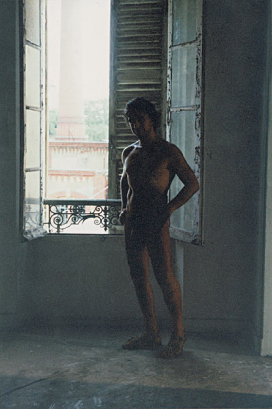








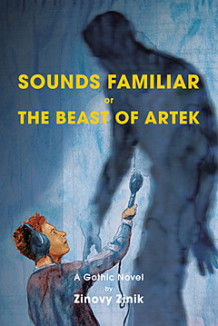






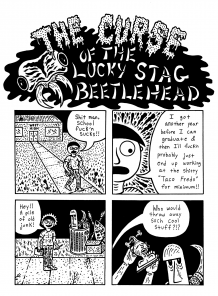




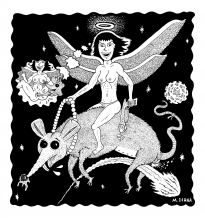
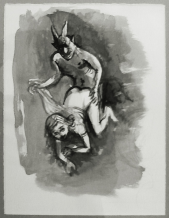
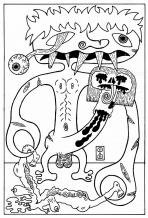
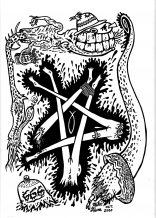


 We Are Rising National Gallery For You! Go to Kyjov by Krásná Lípa no.37.
We Are Rising National Gallery For You! Go to Kyjov by Krásná Lípa no.37.
Comentarios
Actualmente no hay comentariosAgregar nuevo comentario